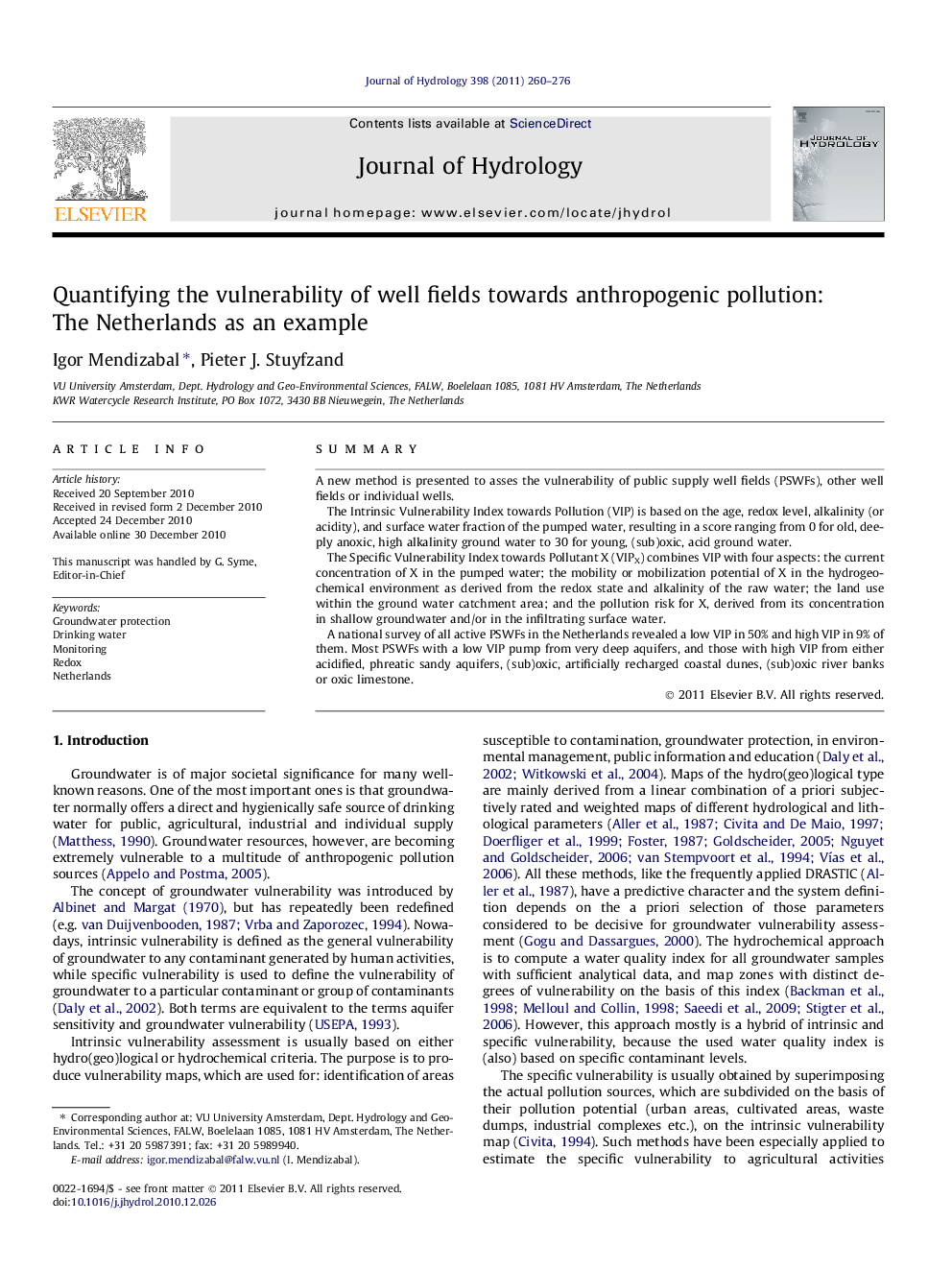| Article ID | Journal | Published Year | Pages | File Type |
|---|---|---|---|---|
| 4577911 | Journal of Hydrology | 2011 | 17 Pages |
SummaryA new method is presented to asses the vulnerability of public supply well fields (PSWFs), other well fields or individual wells.The Intrinsic Vulnerability Index towards Pollution (VIP) is based on the age, redox level, alkalinity (or acidity), and surface water fraction of the pumped water, resulting in a score ranging from 0 for old, deeply anoxic, high alkalinity ground water to 30 for young, (sub)oxic, acid ground water.The Specific Vulnerability Index towards Pollutant X (VIPX) combines VIP with four aspects: the current concentration of X in the pumped water; the mobility or mobilization potential of X in the hydrogeochemical environment as derived from the redox state and alkalinity of the raw water; the land use within the ground water catchment area; and the pollution risk for X, derived from its concentration in shallow groundwater and/or in the infiltrating surface water.A national survey of all active PSWFs in the Netherlands revealed a low VIP in 50% and high VIP in 9% of them. Most PSWFs with a low VIP pump from very deep aquifers, and those with high VIP from either acidified, phreatic sandy aquifers, (sub)oxic, artificially recharged coastal dunes, (sub)oxic river banks or oxic limestone.
Research highlights► We quantify the vulnerability of public supply well fields (PSWFs) and wells. ► Both intrinsic vulnerability (VIP) and specific vulnerability (VIPX) are addressed. ► VIP uses the age, redox level, alkalinity (or acidity), and surface water fraction. ► VIPX also requires land use, capture zone, pollution risk and mobilization potential. ► Our national survey of 241 PSWFs in the Netherlands revealed a good quality status.
